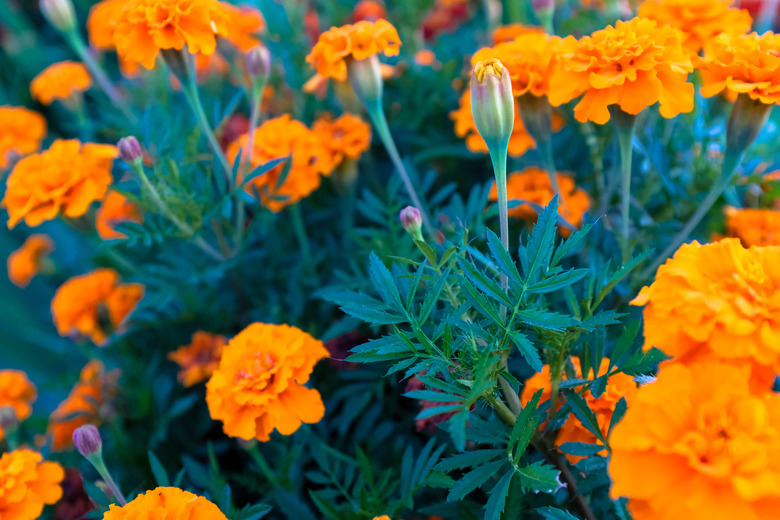How To Tell If A Marigold Is A Calendula
We may receive a commission on purchases made from links.
Both the calendula and the marigold are in the Asteraceae family, and both have a bit of the daisy in their appearance. Although calendula is sometimes called "pot marigold," it is not a true marigold. Each flower has its own beauty, and it is not hard to tell them apart.
Meet the Calendula
Meet the Calendula
The calendula (Calendula officinalis) is a pretty garden plant that is grown for its cheery flowers and profuse blooming habit. It grows as a perennial in U.S. Department of Agriculture plant hardiness zones 9 through 11, but it is widely cultivated as an annual in cooler zones. Planted just after the last spring frost, it flowers about six weeks later.
Calendula blossoms from May through fall, producing lovely flowers in yellow, orange, cream, or pink. The plants bloom over and over if spent blossoms are removed. They grow best in rich, well-drained soil and in a full-sun exposure. The plants die back after the first frost.
Meet the Marigold
Meet the Marigold
How would the garden survive without marigolds (Tagetes spp.), the most reliable of all bedding flowers? Marigold flowers, with their fernlike foliage, just make you smile. They all appear in warm colors, but the size and construction of the blooms can vary considerably. Some are small, while others are bigger with large, double-petal blossoms.
Since marigolds are annuals, many gardeners simply buy starts from the nursery, although these happy flowers grow well from seeds, maturing and blossoming within eight weeks from planting. They bloom brightly in shades of yellow, gold, and orange all summer long. Deadheading is the only essential maintenance task, and it keeps the flowers coming. They require a full-sun location and well-drained soil to thrive.
Differentiate Between the Two
Differentiate Between the Two
Many gardeners want to know how to distinguish between calendulas and marigolds. Why does it really matter which cheery flowers are growing in your garden? Precision is of course one possibility, but the more likely one is that calendulas have traditionally been used in cooking (adding color and a spicy tang to salads, for example), while marigolds are toxic if they are eaten.
The easiest way to differentiate between these two garden plants is to inspect their seeds. Calendula seeds are brown and U-shaped, with small bumps along the exposed surface. Marigold seeds are straight and black with a white tip.
An alternative way of telling the two apart requires nothing more than a sniff. Calendula plants have a slightly sweet aroma, while marigolds have an unpleasant odor that is extremely pungent or spicy.
